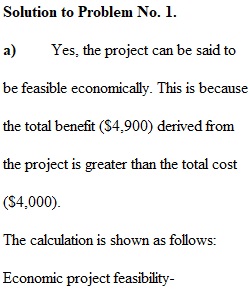


Q Questions: 1. A business improvement district is considering the installation of a new lighting system. If the lighting system is installed, all the businesses in the area will benefit, and there will be no way in which a business does not pay for a share of the system can be denied full benefits from the system. The system will cost $4000 and will benefit the five members of the district as follows: Individual Benefits Cost Share A $1500 $800 B $1500 $800 C $700 $800 D $600 $800 E $600 $800 1a) Is this project feasible? Explain why or why not. 1b) Would any individual business be willing to install the lighting system (and pay for it) by itself? Why or Why not. 1c) Would the project be approved by majority vote of the businesses at referendum? Explain. 1d) Does the project as currently structured meet Pareto Criterion? 1e) If possible, revise the Cost Shares to allow the project to meet the Pareto Criterion and to pass referendum. Do not change the benefits. 2. They City of Bloomington has decided to provide all citizens with a loaf of bread daily in order to improve public health. The bread is to be distributed free of charge at city distribution centers located throughout the city. Does this program make bread a public good? Explain why or why not. If not, what type of good is it? 3. In Chapter 1, we discussed the three traditional economic functions for government identified by Richard Musgrave(1959). 3a) Name and explain each policy. 3b)Which two are state and local government more limited in achieving and which one are state and local government least limited in achieving? Explain why. Student’s Name Professor’s Name University Course Code 15 September 2019
View Related Questions